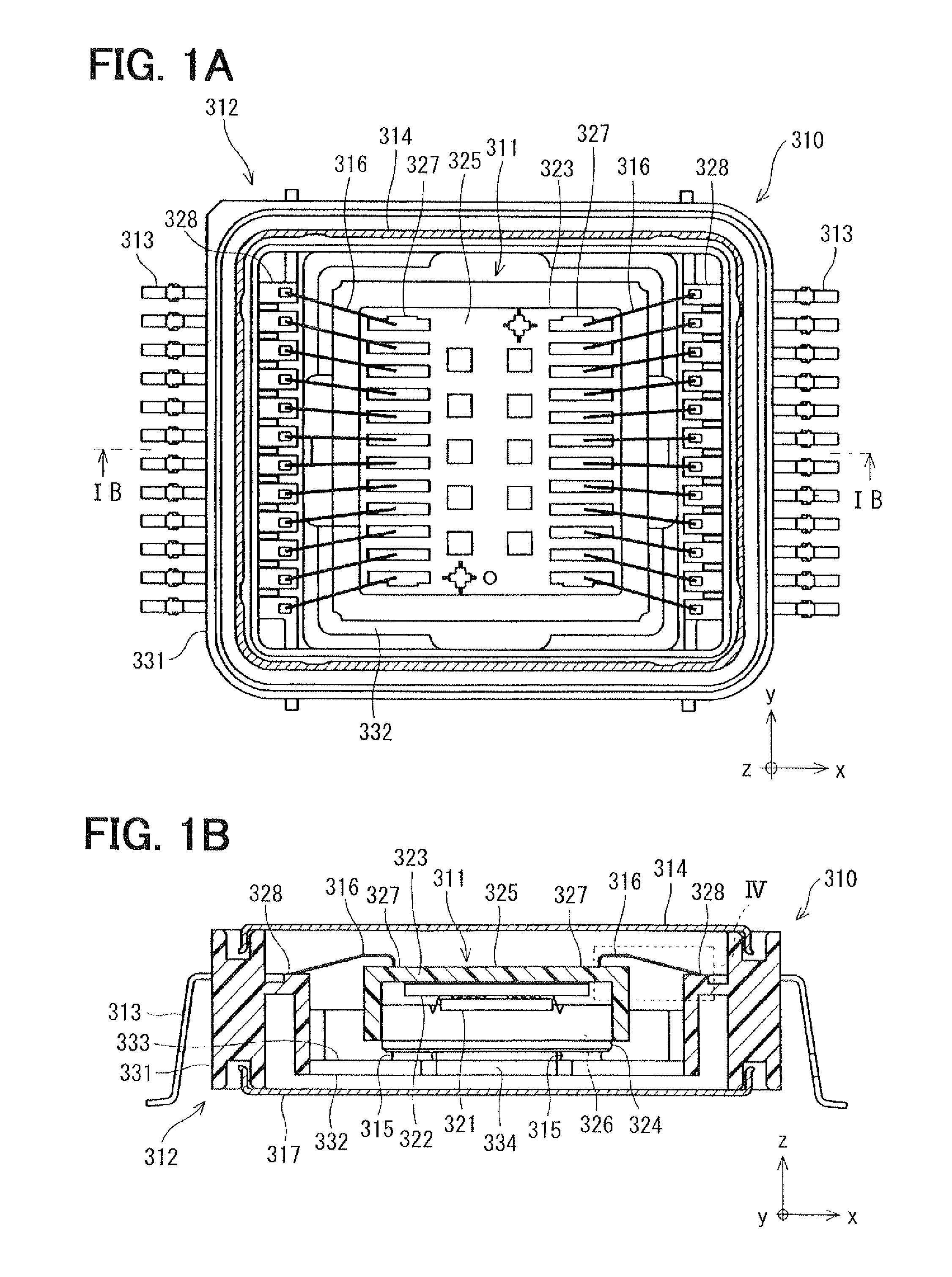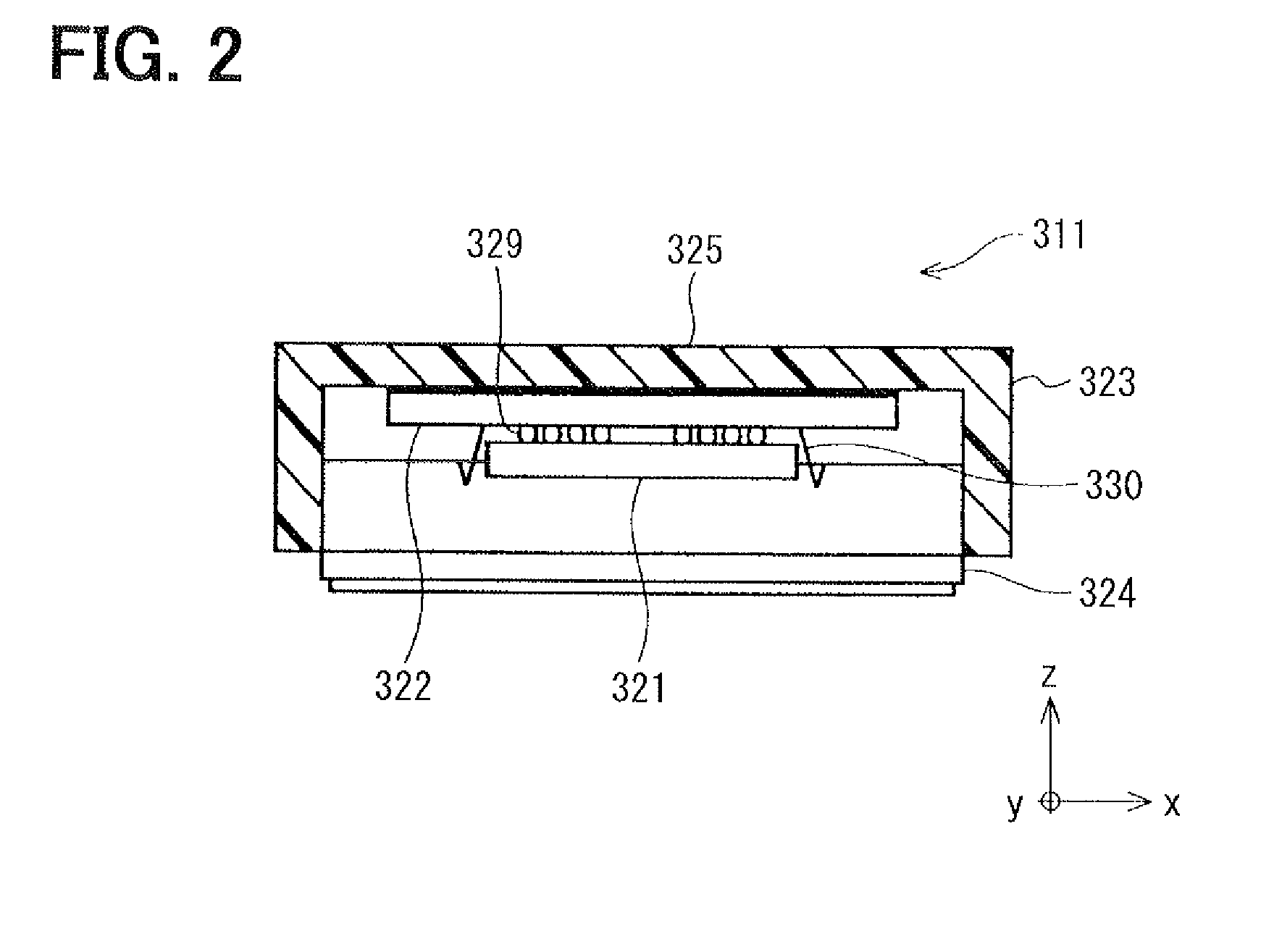Physical quantity sensor including bonding wire with vibration isolation performance characteristics
a technology of vibration isolation and physical quantity, applied in the direction of acceleration measurement using interia force, turn-sensitive devices, instruments, etc., can solve the problems of increasing the noise contained in the output of the sensing portion, difficult to ensure sufficient structural strength of the resin spring, and difficult to achieve desirable vibration isolation performance, etc., to achieve sufficient vibration isolation performance and improve structural strength and durability
- Summary
- Abstract
- Description
- Claims
- Application Information
AI Technical Summary
Benefits of technology
Problems solved by technology
Method used
Image
Examples
first embodiment
[0039](First Embodiment)
[0040]FIGS. 1A and 1B show a physical quantity sensor 310 according to a first embodiment of the present invention. The physical quantity sensor 310 includes an inner unit 311 as a sensing portion, a casing 312, lead frames 313, a cover 314, a vibration isolating member 315, bonding wires 316, and a cover 317. As shown in FIG. 2, the inner unit 311 includes a sensor chip 321, a signal processing chip 322, a housing body 323 and a lid 324.
[0041]The physical quantity sensor 310 is applicable to any one of an angular velocity sensor, an acceleration sensor and an inertia force sensor. That is, the physical quantity sensor 310 can be configured to be any one of the angular velocity sensor, the acceleration sensor and the inertia force sensor. The angular velocity sensor detects an angular velocity in a direction of rotation centering an axis of the sensing portion. The acceleration sensor detects an acceleration applied to the sensing portion. The inertia force s...
second embodiment
[0112](Second Embodiment)
[0113]FIGS. 17A and 17B shows a physical quantity sensor 410 according to a second embodiment. As shown in FIG. 17A, the physical quantity sensor 410 includes an inner unit 411 as a sensing portion, a casing 412, lead frames 413, a cover 414, a vibration isolating member 415, bonding wires 416 and a cover 417.
[0114]As shown in FIG. 18, the inner unit 411 has a sensor chip 421, a signal processing chip 422, a package 423 and a lid 424. The sensor chip 421 has a substantially same structure as the sensor chip 321 shown in FIG. 3.
[0115]The signal processing chip 422 performs signal processing on a capacitance or voltage change detected by the sensor chip 421, and adjusts a voltage applied to the sensor chip 421. The sensor chip 421 and the signal processing chip 422 are, for example, formed on silicon or ceramic substrates. As an detection object, for example, the sensor chip 421 detects an angular velocity or acceleration in directions along the X axis and / or ...
PUM
 Login to View More
Login to View More Abstract
Description
Claims
Application Information
 Login to View More
Login to View More - R&D
- Intellectual Property
- Life Sciences
- Materials
- Tech Scout
- Unparalleled Data Quality
- Higher Quality Content
- 60% Fewer Hallucinations
Browse by: Latest US Patents, China's latest patents, Technical Efficacy Thesaurus, Application Domain, Technology Topic, Popular Technical Reports.
© 2025 PatSnap. All rights reserved.Legal|Privacy policy|Modern Slavery Act Transparency Statement|Sitemap|About US| Contact US: help@patsnap.com



